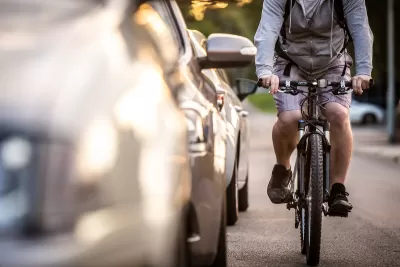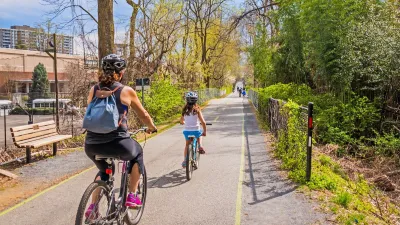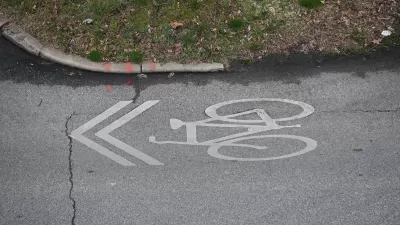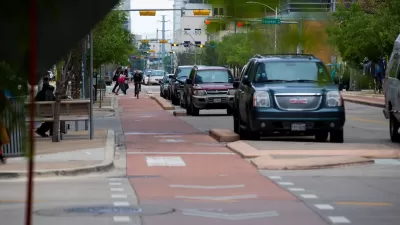The technology could enable cars and bikes to communicate and reduce collisions.

In an opinion piece in Streetsblog USA, Laszlo Virag describes how ‘vehicle-to-everything’ technology, known as V2X, could improve traffic safety and help people on bikes and in cars ‘talk’ to each other. “The principle of V2X communication is very simple: ten times a second, cars send out invisible radio signals that broadcast the vehicle’s size, current position, speed and direction.”
Expanding the technology to bikes, Virag argues, could “provide critical protection for their riders by prompting V2X cars to display a warning right in front of the driver when a cyclist is about to cross their path.”
Virag adds that the technology could be installed at intersections and on other infrastructure and vehicles. “Best of all, all that anonymized data can then be recorded and aggregated, after which it can be shared with cities to help plan new bike and pedestrian infrastructure, or with navigation apps to give vulnerable road users more data on which routes safe.”
Virag cautions that “none of this technology replaces the need for separated bike lanes — and no cyclist should be blamed for a crash simply because they don’t have a V2X enabled bike that can “talk” to a V2X enabled driver.” But the technology could help improve safety in places with little bike infrastructure. “As cities catch up on infrastructure, even a very low level of V2X penetration can give city leaders the detailed data they need on traffic flow, traffic patterns, and even near-miss incidents.”
FULL STORY: Opinion: How Letting Bikes ‘Talk’ To Cars Can Save Lives

Alabama: Trump Terminates Settlements for Black Communities Harmed By Raw Sewage
Trump deemed the landmark civil rights agreement “illegal DEI and environmental justice policy.”

Planetizen Federal Action Tracker
A weekly monitor of how Trump’s orders and actions are impacting planners and planning in America.

The 120 Year Old Tiny Home Villages That Sheltered San Francisco’s Earthquake Refugees
More than a century ago, San Francisco mobilized to house thousands of residents displaced by the 1906 earthquake. Could their strategy offer a model for the present?

LA’s Tree Emergency Goes Beyond Vandalism
After a vandal destroyed dozens of downtown LA trees, Mayor Karen Bass vowed to replace them. Days later, she slashed the city’s tree budget.

Sacramento Leads Nation With Bus-Mounted Bike Lane Enforcement Cameras
The city is the first to use its bus-mounted traffic enforcement system to cite drivers who park or drive in bike lanes.

Seattle Voters Approve Social Housing Referendum
Voters approved a corporate tax to fund the city’s housing authority despite an opposition campaign funded by Amazon and Microsoft.
Urban Design for Planners 1: Software Tools
This six-course series explores essential urban design concepts using open source software and equips planners with the tools they need to participate fully in the urban design process.
Planning for Universal Design
Learn the tools for implementing Universal Design in planning regulations.
Ada County Highway District
Clanton & Associates, Inc.
Jessamine County Fiscal Court
Institute for Housing and Urban Development Studies (IHS)
City of Grandview
Harvard GSD Executive Education
Toledo-Lucas County Plan Commissions
Salt Lake City
NYU Wagner Graduate School of Public Service





























